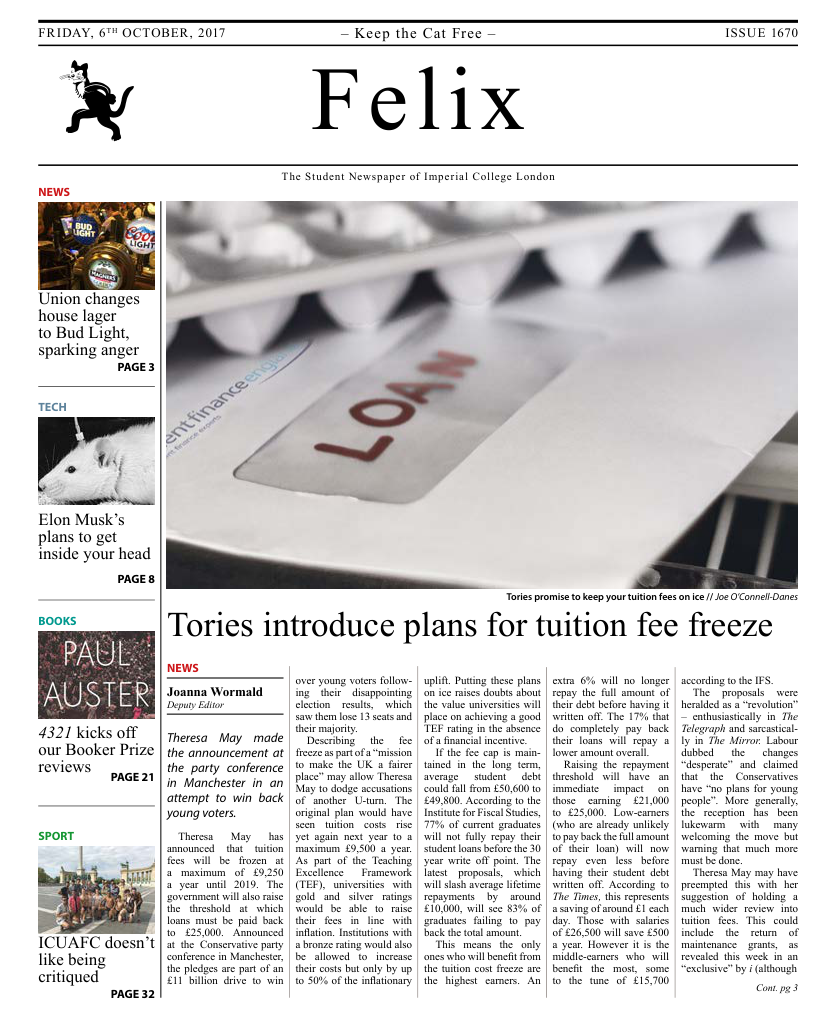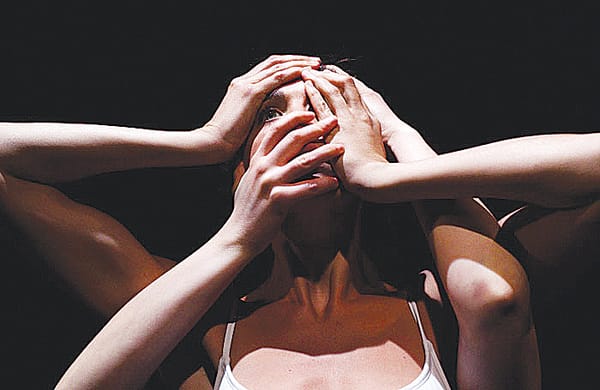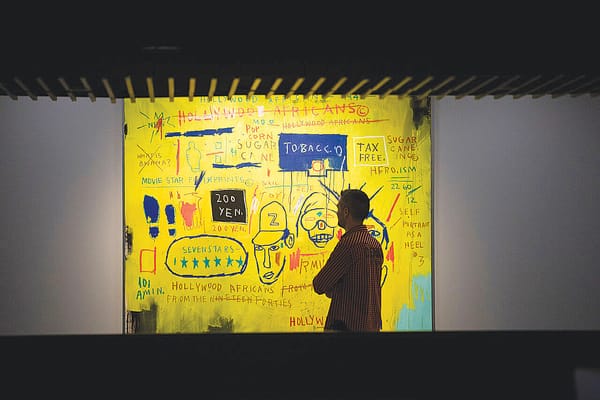Too Young For What?
A showcase of Basquiat’s legacy and the creativity of London’s young artists

Too Young For What? is a free day of art and activities at the Barbican Centre inspired by Basquiat: Boom For Real, a retrospective on the work of American artist Jean-Michel Basquiat. The day will feature work by glitch artist Antonio Roberts, poet Jacob Sam-La Rose and performance maker Paula Varjack as well as workshops and discussions. Freya Hepworth-Lloyd spoke to curator Chris Webb about Basquiat’s legacy and the importance of supporting young artists.
FHL: What makes Basquiat’s art so important to you?
CW: What’s important to me is the response it evokes in the people I work with. Whether it is families visiting the gallery with children who have never heard of Basquiat, or the Young Barbican members who have been waiting most of their lives to see his work in real life – it has struck me how inviting and accessible his work is to everyone who comes to see it. Laden with symbols, text and imagery, Basquiat’s work draws out people’s curiosity and invites the audience to make their own interpretations.
FHL: How do you think Basquiat has influenced art today?
CW: Basquiat’s work continues to inspire new artists across all the art forms; young people are inspired by the fact that he had no formal training and broke the boundaries of the art world – I think his cross-arts approach and the collaborative nature of the New York scene also resonates with the next generation of artists who are increasingly under pressure to do more and be multi-disciplinary.
FHL: Why did you decide to curate this event and why now?
CW: We heard a lot of excitement from the young people we work with at Barbican Guildhall Creative Learning when Boom for Real was first announced - the work of Jean-Michel Basquiat really resonates with young people. It felt fitting to curate an event that gives young people the opportunity to explore and showcase their creativity. Poets, curators, reviewers, artists and photographers: Basquiat’s cross-arts practice provides a perfect platform to bring these art forms together at Barbican.
FHL: How and why did you choose the established artists involved?
CW: The artists involved are a mix of artists we have existing relationships with, like poet Jacob Sam-La Rose who leads Barbican Young Poet and Paula Varjack, a performer who is a tutor on Barbican Junior Poets, and artists we have cultivated projects with specifically for this show, like glitch artist Antonio Roberts who we are undertaking a new glitch portrait project with. We have also engaged four past-members of Barbican Young Poets to host conversations on the ‘SAMO©, but different’ stage, and have a group of sixteen young artists from across all our programmes who will be creating new work in a two-day ‘Art Hack’ and showcasing it on our main stage. To engage new artists we have partnered with Poet in the City to co-curate several parts of the event – through our work with them we’ve been able to find an exciting group of writers, poets, musicians and street artists, all of whom feel a personal connection to Basquiat’s work.
FHL: What first drew you to these artists?
CW: We approached them mainly because their practice had a link or connection to Basquiat. For some artists this was a very literal connection – for example Gemma Weekes will be sharing an excerpt of her performance Who Murked Basquiat?, a piece inspired by the work, life and times of Basquiat and her own struggles with misogynoir. For others it was more about finding parallels in practice. I approached glitch artist Antonio Roberts because of his interest in copyright, ownership and appropriation of content – Antonio is both an artist and the curator of the show ‘No Copyright Infringement Intended’ and the themes that run through his practice resonate with Basquiat’s process.
FHL: Is the future of art in collaboration?
CW: Collaboration is always going to be important to art, but it is especially essential for young creatives today who are under pressure to be artist, curator, agent, marketer and often commissioner of their own work. It is important that young people are supported and feel they are a part of a creative community that both supports them and pushes their boundaries. With Too Young For What? , we are trying to draw inspiration from the collaborative scene that Basquiat was a part of, while drawing parallels to the London scene today. Many of the workshops and activities are collaborative in nature and the ‘Make A Scene’ room invites visitors to have a say, discuss and create content that reflects their creativity today.
FHL: Why is it important to have platforms for young artists?
CW: With increasing pressure and standardisation in formal education, it’s important that young people have opportunities to explore their own creativity and measure their progress against their own goals and standards. Barbican’s Young Creative programmes give young people an opportunity discover their creative voice and work with mentors who support them to showcase their best work. There are many routes into careers in the arts and it’s important to provide young people with informal opportunities that fit around the pressures in their lives – our programmes like the Young Visual Arts Group give young people insight into what a career as an artist/curator looks like, but also into the inner workings of arts organisations, so they gain an understanding of how to programme, market, deliver and evaluate their own arts event.
Too Young for What will take place at the Barbican Centre on Saturday the 7th of October from 12 noon. Admission is free. Check barbican.org.uk for fullprogramme of events









